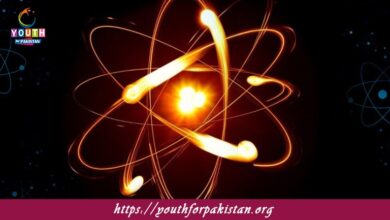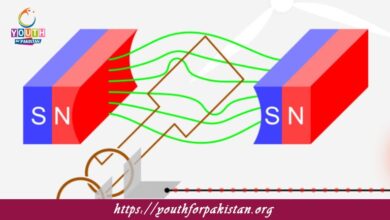Anaerobic Respiration MDCAT MCQs with Answers
Welcome to the Anaerobic Respiration MDCAT MCQs with Answers. In this post, we have shared Anaerobic Respiration Multiple Choice Questions and Answers for PMC MDCAT 2024. Each question in MDCAT Biology offers a chance to enhance your knowledge regarding Anaerobic Respiration MCQs in this MDCAT Online Test.
What is the primary purpose of anaerobic respiration?
a) To produce ATP in the absence of oxygen
b) To convert glucose to carbon dioxide
c) To synthesize proteins
d) To generate oxygen
Which of the following is a common end product of anaerobic respiration in yeast?
a) Lactic acid
b) Ethanol and carbon dioxide
c) Acetyl-CoA
d) Glucose
Which process occurs in muscle cells during intense exercise when oxygen is scarce?
a) Aerobic respiration
b) Glycolysis
c) Lactic acid fermentation
d) Citric acid cycle
In anaerobic respiration, glucose is converted to which molecule?
a) Pyruvate
b) Acetyl-CoA
c) Lactic acid or ethanol
d) Carbon dioxide
What is the main advantage of anaerobic respiration compared to aerobic respiration?
a) It produces more ATP
b) It does not require oxygen
c) It produces more carbon dioxide
d) It generates more heat
Which enzyme is crucial for converting pyruvate into lactic acid during anaerobic respiration?
a) Lactate dehydrogenase
b) Pyruvate kinase
c) Hexokinase
d) Phosphofructokinase
How many ATP molecules are produced per glucose molecule during anaerobic respiration in yeast?
a) 2
b) 4
c) 32
d) 38
What is the byproduct of anaerobic respiration in human muscle cells?
a) Ethanol
b) Carbon dioxide
c) Lactic acid
d) Acetyl-CoA
Which process occurs in the cytoplasm of cells during anaerobic respiration?
a) Electron transport chain
b) Citric acid cycle
c) Glycolysis
d) Oxidative phosphorylation
What happens to the pyruvate produced during glycolysis in the absence of oxygen?
a) It enters the mitochondria
b) It is converted to ethanol or lactic acid
c) It is used in the citric acid cycle
d) It is converted to acetyl-CoA
Which process converts pyruvate to ethanol and carbon dioxide in yeast cells?
a) Lactic acid fermentation
b) Alcoholic fermentation
c) Aerobic respiration
d) Beta-oxidation
In which organisms does alcoholic fermentation primarily occur?
a) Bacteria
b) Plants
c) Yeasts
d) Animals
Which of the following is a direct product of lactic acid fermentation?
a) Pyruvate
b) Glucose
c) ATP
d) Lactic acid
Which of the following is true about anaerobic respiration?
a) It produces more ATP than aerobic respiration
b) It occurs in the mitochondria
c) It is less efficient than aerobic respiration
d) It requires oxygen
During which phase of anaerobic respiration is ATP generated?
a) Electron transport chain
b) Citric acid cycle
c) Glycolysis
d) Alcoholic fermentation
Which enzyme converts pyruvate into ethanol during alcoholic fermentation?
a) Alcohol dehydrogenase
b) Lactate dehydrogenase
c) Pyruvate decarboxylase
d) Hexokinase
What is the fate of NADH produced during glycolysis in anaerobic respiration?
a) It is used in the citric acid cycle
b) It is converted back to NAD+
c) It is used to produce ATP directly
d) It is converted to water
Which of the following is not a product of anaerobic respiration?
a) Lactic acid
b) Ethanol
c) Carbon dioxide
d) Oxygen
What is the primary reason for the production of lactic acid during anaerobic respiration in muscle cells?
a) To increase the production of ATP
b) To regenerate NAD+ for glycolysis
c) To produce ethanol
d) To provide oxygen to the cells
Which of the following does not occur during lactic acid fermentation?
a) Conversion of pyruvate to lactate
b) Generation of ATP
c) Conversion of NADH to NAD+
d) Production of carbon dioxide
What happens to the lactate produced in muscle cells during anaerobic respiration?
a) It is used to generate ATP directly
b) It is converted to ethanol
c) It is transported to the liver for conversion to glucose
d) It is expelled from the body as waste
Which process is used by yeast cells to produce bread and alcoholic beverages?
a) Lactic acid fermentation
b) Aerobic respiration
c) Alcoholic fermentation
d) Photosynthesis
What is the maximum number of ATP molecules produced during anaerobic respiration?
a) 1
b) 2
c) 3
d) 4
What is a common use of anaerobic respiration in the dairy industry?
a) Production of lactic acid in yogurt
b) Production of ethanol in beer
c) Production of acetyl-CoA in cheese
d) Production of carbon dioxide in bread
Which process allows cells to continue glycolysis in the absence of oxygen?
a) Alcoholic fermentation
b) Lactic acid fermentation
c) Aerobic respiration
d) Citric acid cycle
During anaerobic respiration, which molecule is regenerated to allow glycolysis to continue?
a) ATP
b) NAD+
c) FAD
d) Oxygen
Which of the following is true about anaerobic respiration in terms of energy production?
a) It produces less energy compared to aerobic respiration
b) It produces more ATP than aerobic respiration
c) It requires more oxygen than aerobic respiration
d) It generates more carbon dioxide than aerobic respiration
What is the primary byproduct of alcoholic fermentation?
a) Lactic acid
b) Acetic acid
c) Ethanol
d) Glucose
Which process is associated with the production of carbon dioxide and ethanol in yeast?
a) Lactic acid fermentation
b) Alcoholic fermentation
c) Aerobic respiration
d) Glycolysis
How many ATP molecules are produced per molecule of glucose during lactic acid fermentation?
a) 1
b) 2
c) 3
d) 4
What is the role of lactic acid fermentation in muscle cells?
a) To produce ethanol
b) To regenerate NAD+ for glycolysis
c) To produce additional ATP through the electron transport chain
d) To convert glucose to pyruvate
Which of the following organisms is known for performing alcoholic fermentation?
a) Bacteria
b) Yeast
c) Plants
d) Animals
What is the final electron acceptor in alcoholic fermentation?
a) Oxygen
b) Ethanol
c) Pyruvate
d) NAD+
What happens to the lactic acid produced during anaerobic respiration in muscle cells after exercise?
a) It is broken down into glucose
b) It is converted to ethanol
c) It is converted to glucose in the liver
d) It is used directly as an energy source
Which of the following processes occurs in the cytoplasm of the cell?
a) Glycolysis
b) Citric acid cycle
c) Electron transport chain
d) Krebs cycle
What is a common industrial application of lactic acid fermentation?
a) Production of bread
b) Production of yogurt
c) Production of ethanol
d) Production of beer
Which of the following is not a characteristic of anaerobic respiration?
a) Oxygen is absent
b) Pyruvate is converted to ethanol or lactic acid
c) The process occurs in mitochondria
d) It produces less ATP than aerobic respiration
If you are interested to enhance your knowledge regarding Physics, Chemistry, Computer, and Biology please click on the link of each category, you will be redirected to dedicated website for each category.




